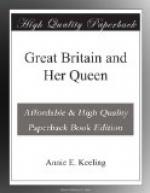Further, the Conference was to discover how to adjust our mission work so as to prevent waste and friction; suggesting also modes and agencies for the most successful work of evangelisation. Nor was this all; its promoters trusted to gain light on the relation of universal Methodism to education, civil government, other Christian bodies, and missionary enterprise at large, and looked for a vast increase in spiritual power and intelligent, enthusiastic activity among the various branches of Methodism, whose gathering together might well draw “the attention of scholars and reformers and thinkers to the whole Methodist history, work, and mission,” while a new impulse should be given to every good work, and a more daring purpose of evangelisation kindled. The British Conference pointed out the need of frankly recognising the not unimportant differences amongst the various Methodist bodies, so as to rule out of discussion any points which had a suggestion of past controversies. The American Conference accepted this.
[Illustration: The Methodist Settlement, Bermondsey, London, S.E.]
The smaller Methodist bodies being invited to join, the four hundred delegates were sent up by the various branches of the Methodist Church as nearly as possible in proportion to their numerical strength; seven sections of British Methodism and thirteen from the United States and the Mission fields, numbering probably twenty millions, were represented. It was fitting that the first Oecumenical Conference should meet in City Road, the cathedral of Methodism. Bishop Simpson preached the opening sermon; the delegates then partook of the sacrament together, and Dr. Osborn, President of the Conference, gave the opening address. The Oecumenical Conference did not aim at determining any debated condition of Church membership, or at defining any controverted doctrine, or settling any question of ritual; it met for consultative, not legislative purposes. As such, the gathering brought about the thing which is written: “Thy watchmen shall lift up the voice; with the voice together shall they sing... Then thou shalt see, and flow together, and thine heart shall fear, and be enlarged.”
By a happy coincidence, that largehearted son of Methodism, the late Sir William M’Arthur, was then Lord Mayor of London, and he gave a congratulatory welcome to the delegates at a magnificent reception in the Mansion House.
The next important event in Methodist history during the Queen’s reign is the rise and progress of the great Wesleyan Missions in the towns—a vast beneficent movement, in which some at least of the aspirations cherished by the promoters of the first Oecumenical Conference appeared to have been realised.
The tendency of our day is towards a steady flow of population from the villages to the towns, especially to London. In 1837, there was only one London district, covering a very wide area, and including six circuits, whose total membership was only 11,460, after a hundred years of Methodism. The various branches of the recently established London Mission report more than a third of this number after less than ten years’ labour.




